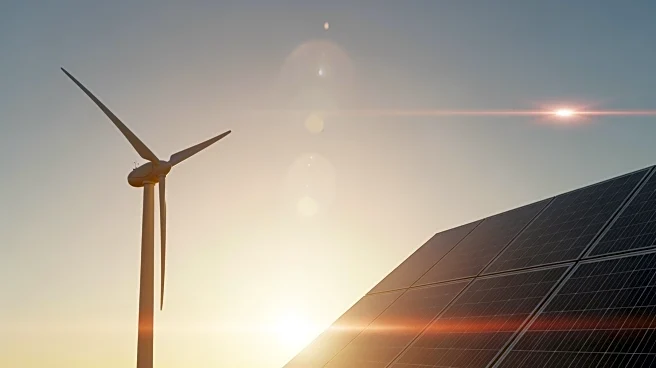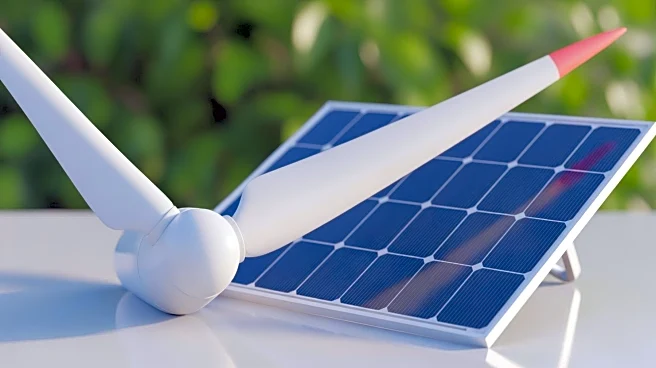What's Happening?
China's renewable energy sector is experiencing a slowdown in installations due to a new pricing system that requires developers to secure contracts directly with buyers. This change has led to a rush
to complete projects faster than originally scheduled, resulting in fewer projects available for completion in the third quarter of 2025. Despite this slowdown, China is on track to set a new record for solar and wind power capacity additions for the year, with 240GW of solar and 61GW of wind power added in the first nine months. The government has also accelerated the addition of new coal and gas-fired power capacity, as projects initiated after the 2020 promotion of coal-fired power are nearing completion.
Why It's Important?
The slowdown in renewable energy installations in China could have significant implications for global efforts to combat climate change. As one of the largest emitters of CO2, China's energy policies and capacity growth are closely watched by international stakeholders. The shift towards direct contract pricing may impact the pace of renewable energy deployment, potentially affecting China's ability to meet its climate goals. Additionally, the acceleration of coal and gas-fired power projects raises concerns about increased emissions, which could counteract the benefits of renewable energy growth.
What's Next?
The future of China's renewable energy sector will depend heavily on the implementation of national-level rules at the provincial level, particularly regarding minimum pricing. With several provinces yet to finalize their rules, the pace of solar and wind deployment remains uncertain. The government may need to reassess its promotion of coal-fired power projects if utilization rates continue to fall. Furthermore, the gap between industry and government expectations for wind and solar growth could lead to policy adjustments to align targets and ensure sustainable energy development.
Beyond the Headlines
The changes in China's energy sector highlight the complex interplay between economic growth, environmental sustainability, and policy implementation. The shift to direct contract pricing reflects a broader trend towards market-driven solutions in the energy industry. This approach may encourage innovation and efficiency but also poses challenges in terms of regulatory oversight and equitable access to clean energy. The ongoing development of coal and gas-fired power projects underscores the tension between immediate energy needs and long-term environmental goals.













